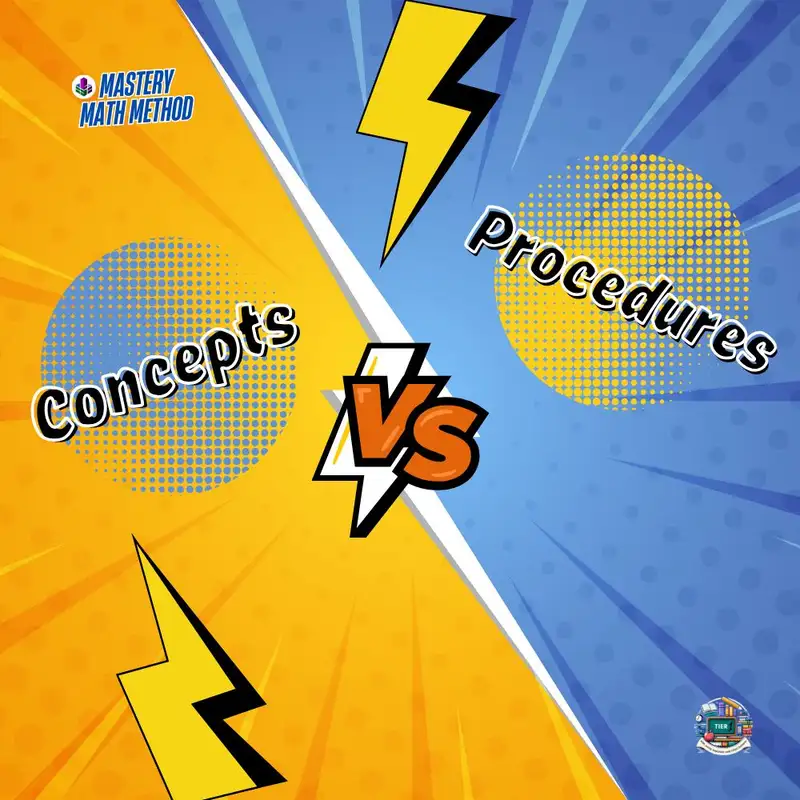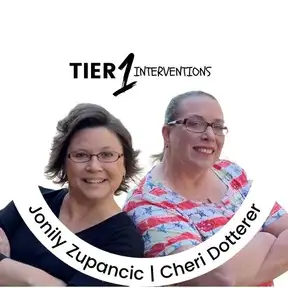
Why students struggle with math
Jonily: [00:00:00] Hey everybody, it's Cheri Dotterer here at Tier One Interventions podcast.
I'm here today with Jonily Zupancic and we are in class today with a live group of ladies and gentlemen who are learning about the Mastery Math method. So I'm gonna let Jonily talk and if there's any intervention that I wanna add to the puzzle, we will do but for now, I'm signing it all over to Jonily and let us learn a little bit about mathematics.
Girl. Y'all, this is Jay-Z. I'm Jonily Zupancic, I'm your math specialist, your main Mathineer. I if you are listening to this podcast or you're watching this podcast on YouTube I want to give a disclaimer and a warning. This is level two. You're listening in on a level two version of Mastery Math method.
Mastery Math Method is strengthening our tier one core general classroom. We cannot have in our schools effective interventions and effective [00:01:00] tier two and tier three without the strongest core. So if you're listening to this, that's the mindset that I want you to have. You should be listening to this.
If you are a general classroom teacher, a special ed teacher, a parent, a school board member, a superintendent, a curriculum director, a principal, every stakeholder should be involved in the qualities of a strong tier one general classroom environment and the experiences that students are going to have.
this is Brian, this is part of Brian's story. This is true story. When Brian got to seventh grade, he said we were doing a task where he had to add these up, and he said, Mr. Pans I know in my head what this is, because Brian had a very good concept of number. He just didn't have the math ability.
We talk about that in making Mathineers like a number sense is something that's innate and intuitive. It's that mental math piece. He had that outstanding, but he didn't have [00:02:00] the math ability, which is that procedural algorithmic. And oftentimes we judge based on the procedural algorithmic, and that's where we get our data from.
And we want kids to be able to do that, but we don't know how to take the instruction from extracting their perspective and what they have concept-wise and connecting it to the procedural. And so what Brian said to me is, I know that if I add 40, 40 and 40, that I'm going to get one 20, make sure I do this right, because I like, it's late and I'm going on three hours of sleep for four nights in a row.
And then I know that four, four and four is 12. So I know that if I'm looking at one 20. And 12, I know I have 1 32. So in his head he can process through that and he can do it accurately and efficiently and fluently and automatically and all of those things that we want from [00:03:00] students, however he says.
But when Mr. Grappner is stacking and adding, then I don't get 1 32. That way I get 12. 12. So by seventh grade, this is a, a much younger standard, but the numbers came up in one of our seventh grade tasks. And so Brian had enough self-awareness that he was able to ask me here's the situation.
This is what I'm getting in my head. This is what I get when I stack it. This is not what Mr. Grappner gets. Where's the disconnect? And so in the mastery math method, we talk about the strategies to connect for kids that have the conceptual but not the procedural and how to bridge that gap. And it's a very by seventh grade, by the secondary level.
And this is why we say that improving number sense is not [00:04:00] intervention. It should just be natural instruction at the secondary level. We shouldn't expect that kids come in just knowing this. We have to explicitly and directly. Make this connection so that they understand how the notation symbols and procedures match what they already know conceptually.
All right, Amy, tell us incognito. Amy, I, I know lighting is getting really bad. Here's my lone light that I have on in this room right now. My eyes burn, like first day with kids, so tired. I have several Brians this year. FYI welcome. I'm going to have several Brians. What was my takeaway? I took screenshots just to remind me of the, not screenshots, but little pictures, like the pre-planning stuff, how I said like it's in a different way.[00:05:00]
I know I've seen the sensory motor cognitive
with the little sub things underneath it of the vestibular and that kinda stuff. I can never keep straight what all of those are, but I know I got that from Cheri in convos. And then I like how, like the planning part, it was bridging both of the things that I've gone to you guys like either individually and together, if that makes sense.
Because I felt like the planning part was all stuff that I've Mo mostly talked about with Jonily. I feel like I thought of that mostly as math stuff, but the pre-planning up to the academic I felt like. But Cheri stuff that I've gotten from her, I don't know. [00:06:00] My brain's not working anymore though.
Cedric: "Thanks so much for joining us for this session of the Mastery Math Method. If what you’ve heard tonight has sparked your curiosity, don’t wait—this is the time to explore how these strategies can transform math outcomes for your students.
📞 Call Cheri for details on how to join the Mastery Math Method at this link: tidycal.com/cheridotterer/letsgrabcoffee
.
Let’s grab a coffee and talk about how you can bring these results into your own classroom or district."
Until then, remember. every student deserves the chance to see themselves as a mathematician. And as Cheri and Jonily say, Go Be Awesome! Go Be Brilliant! For you were put here for such a time as this.
Episode Video
Creators and Guests


